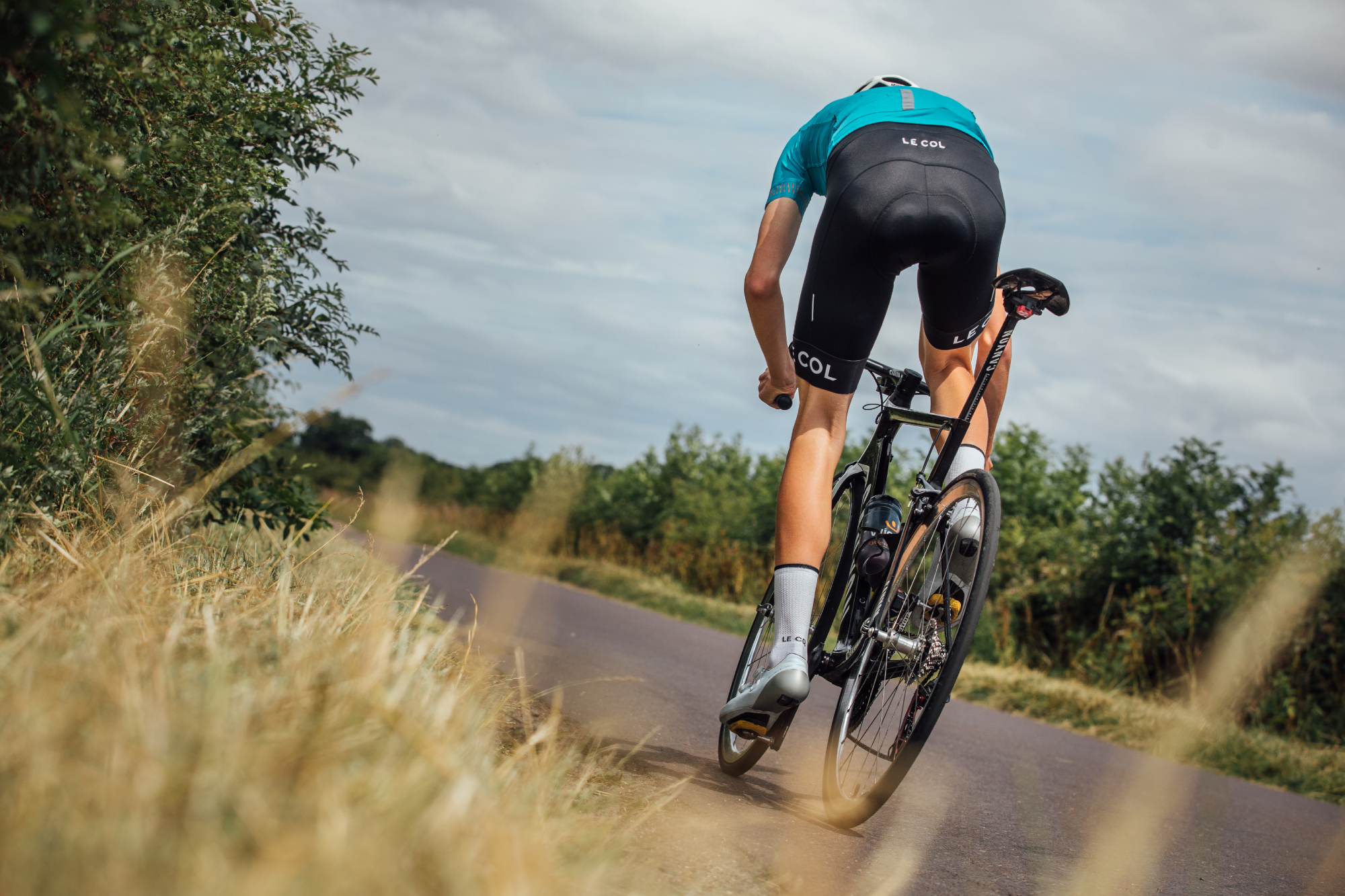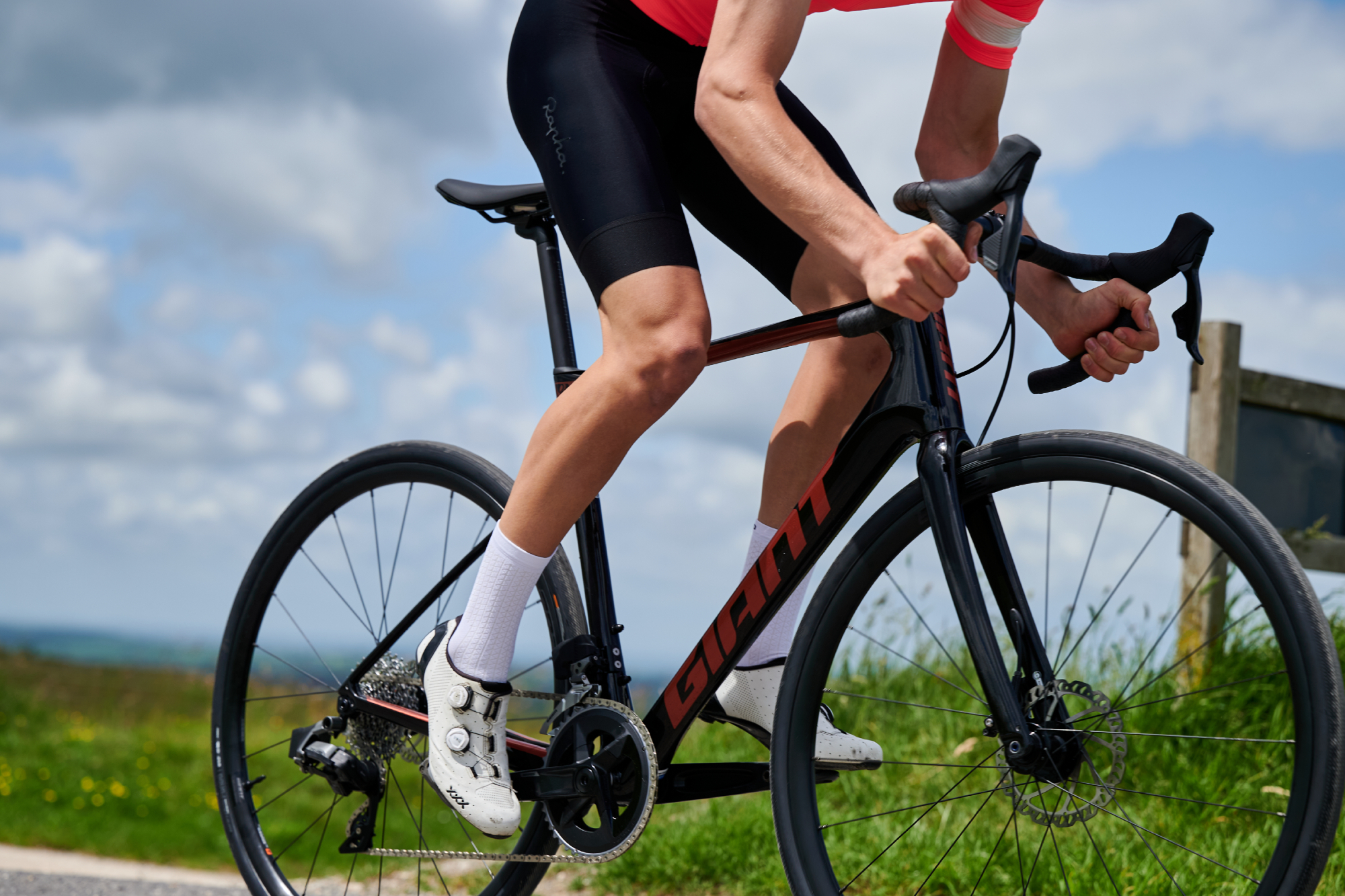Which muscles does cycling work the most?
We take a deep dive into the many muscles used for cycling and the roles they perform


Cat Glowinski
We all know that cycling is a great cardio workout. It raises the heart rate, and it gets you out of breath. But there is more to it than just heavy breathing. The muscles (and more of them than you might imagine) play a huge part too.
Top-level road cycling isn't known for its beefy physiques, so while you're not going to end up looking like Arnie (who coincidentally is a bit of a cyclist himself), your muscles are going to get a great workout.
It will come as no surprise to hear that the muscles in the lower half of the body do most of the work, but those in the torso and upper body are also key. They've all got different jobs to do, and while some are putting out more power than others, you won't get far unless they're all working.
Let's take a look at the various muscles, in turn, that enable you to enjoy your favourite two-wheeled pastime to the full.
1. Quadriceps

The quadriceps (quad or thigh muscles) are among the largest and strongest in your body, in addition to being the most obviously toned on a regular or serious cyclist. They are a major player when it comes to producing power while cycling, which is primarily during the downstroke when pedalling.
Often thought of as a singular muscle, the quads are actually a group of four (quadriceps is Latin for four-headed): vastus medialis (teardrop muscle on the top of the inner thigh), rectus femoris (muscle on the top middle of the thigh and the only one of the four to start from the hip bone, therefore crossing both the hip and the knee), vastus intermedius (underneath the rectus femoris) and vastus lateralis (along the outer side of the thigh).
These muscles run down from the top of the femur or hip and attach to the knee cap (patella), which itself connects to the tibial tuberosity (the bony lump on the top of the lower leg).
The latest race content, interviews, features, reviews and expert buying guides, direct to your inbox!
2. Gluteus

The glutes are one of the superstar muscle groups. You may know that the gluteus maximus is the largest muscle in the body, but what you might be less aware of is that it is part of a wider group, which includes the gluteus medius and gluteus minimus.
In terms of the roles these all perform, the gluteus maximus is the powerhouse of the three, producing a huge amount of force. The gluteus medius and gluteus minimus, in contrast, work on hip abduction (bringing the hip out to the side) and stability.
When looking at what muscles are toned by cycling, the gluteus maximus is a big one. Track sprinters, with their huge power outputs, will often have particularly large and toned muscles in this area.
One thing to bear in mind is that many cyclists fail to fully utilise, or activate, these muscles — particularly riders who tend to spend a lot of time sitting down in the saddle. Doing specific strength training with movements that focus on hinging the hips is a great way to strengthen them and increase their force production capacity. Think squats and Romanian deadlifts.
3. Hamstrings

The hamstrings are the muscles on the underside (or backside) of your thighs. They work in tandem with the quadriceps, flexing and relaxing with every pedal stroke.
All the hamstring muscles originate from the hip and attach to the tibia or fibula; the two bones that make up your lower leg, below your knee joint and above your ankle joint. These muscles are responsible for hip extension and knee flexion during the upwards phase (mainly between 6 o’clock and 9 o’clock of the pedal stroke).
Due to their large contribution to pedalling, the hamstrings generally become quite toned from regular cycling, and are often visible as long, defined cords running down the rear of the thigh.
However, because the leg remains bent throughout the pedal stroke, regular cyclists often find they can get pretty tight too, so stretching is extra important.
4. Calves

The calf muscles are made up of the gastrocnemius (the large toned muscle both on the inside and outside of the lower leg) and the soleus (underneath the gastrocnemius but visible on the outside of the lower leg).
These muscles work your ‘dorsiflexion’, which basically means when you point your toe up during the downwards phase of the pedal stroke and at the very bottom of it. You’ll see these muscles often get very toned by cycling, which is the result of a combination of significant recruitment and the fact that many people don’t store much fat in this area.
5. Tibialis Anterior

Running along the front of the shin is the tibialis anterior, which contributes to ankle plantar flexion during the upwards phase of the pedal stroke (between 9 o’clock and 12 o’clock), keeping the knees and ankles stable and balanced. ‘Plantar flexion’, by the way, is just the opposite of ‘dorsiflexion’, i.e. when you point your toes down in the upward phase of the pedal stroke.
Digging deeper

There are plenty of other muscles in the leg that contribute to the pedal stroke, however many of them are deep muscles, meaning that they are less visible. They tend to be more involved in leg, knee, and ankle stability during cycling, however this does not make them any less useful.
There is debate about the necessity of hip extension, knee flexion, and ankle plantar flexion during the upwards phase of the pedal stroke. Some believe that it is beneficial to actively conduct these movements and focus on pulling your legs upwards (often with single leg drills on the bike).
Others believe it is more beneficial to be able to reduce muscle activation on the upwards phase of the pedal stroke and allow the more powerful quadriceps and glutes in the active leg (downstroke) to move the passive leg (upstroke) upwards as part of the opposite downwards stroke (doing high cadence intervals can supposedly assist).
However, generally the body is quite good at finding the most efficient way to produce force, hence why some professionals have been toe pointers and others heel droppers. Similarly, some spin a particularly fast cadence and others grind a bigger gear. The key factor tends to be force generation and muscle activation patterns. Great ways to improve this are resistance training along with a combination of high torque cycling efforts and high speed/RPM cadence drills.
Another interesting element is muscle usage, because when we cycle, it is primarily a concentric force that we are looking to generate. Concentric muscle contractions are where we produce force as the muscles shorten, whereas eccentric contractions are where we produce force while the muscles are lengthened.
Eccentric contractions are what generally result in delayed onset muscle soreness (DOMS) and happen as we walk or run, especially downhill. This is why some elements of running, walking, and resistance training are very useful to incorporate into your training for muscle and bone health, as well as muscle strength.
That said, if maximum gains on the bike are your primary goal, then excessive running isn’t advised as it can be detrimental to overall cycling performance. Add in a bit of cross training and some strength and conditioning work to improve muscular function.
The more you cycle, the more you can improve the amount of work these muscles do and how strong they will be. Adding resistance training into the mix is a great way to boost strength, power, and the appearance of these muscles.
What about the core and upper body?

As a road cyclist, the core and upper body require far less attention as they don’t have a direct impact on the power you’re putting through the pedals.
They definitely should not be ignored, however, as a strong core, back, arms and shoulders are essential to support the body through the pedal stroke, preventing pain and injury.
Together, the core and erector spinae (muscles and tendons running almost the entire length of the spine) stabilise the upper body so you can transfer power efficiently. Cycling alone won’t strengthen these muscles, so incorporating a good core workout is wise. Planks are a good start but there are plenty of other core exercises that are worth the effort.
The arms, shoulders, and upper torso muscles play a small but still significant part too. You’ll see sprinters and mountain bikers, for example, tend to have less of a ‘classic cycling physique’ because upper body strength is more important in these disciplines.
In a cycling position, isometric contractions occur in the shoulders and trunk while producing force, helping to support the weight of the body, maintain posture and provide the legs with a stable platform for power transfer.
If you feel like your upper body needs some work then check out these exercises.
Andy is a Sport & Exercise Scientist, fully qualified and experienced Cycling Coach, Sports Director, Freelance Writer, and Performance Consultant. He spent 3 years riding for a UCI cycling team and 7 years as a BC Elite rider, competing in prestigious events such as the Tour of Britain and the Volta a Portugal.
Graduating with a first-class honours degree in Sport & Exercise Sciences, he continues to pursue his interest in research in the field of Sport Science alongside managing his coaching business, ATP Performance. He also works as a Wind Tunnel operator and Performance Consultant at the Silverstone Sports Engineering Hub, working with individuals, teams, and businesses to optimise performance and develop products.
- Cat GlowinskiFreelance Writer
You must confirm your public display name before commenting
Please logout and then login again, you will then be prompted to enter your display name.
